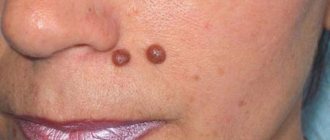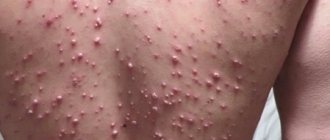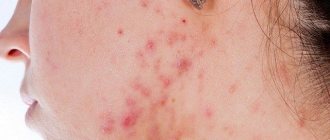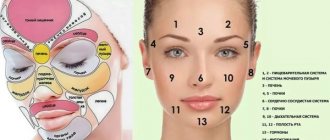Folklore attributes the appearance of warts to touching frogs or toads. But in fact, Verruca vulgaris or vulgar warts are benign skin growths caused by the human papillomavirus. Warts are contagious and can be passed on to other people, especially through wet or broken skin.
Most often, parents come to a dermatologist at the Miracle Doctor clinic to remove a child’s wart when they are concerned about:
- the appearance of warts, especially on the face of a child;
- growth of large warts;
- the growth of a large number of warts on the hands or feet;
- reappearance of the wart after removal;
- discomfort and pain if a wart is on a child’s foot.
When all the traditional methods for removing a wart have already been tried and have not brought results, the parents decide to remove the wart from the child in the dermatologist’s office.
Reasons for the formation of warts in children
The following infection mechanisms can provoke the appearance of warts in a child on the hands, face or body:
- Personal contact with a person who is a carrier of the HPV virus;
- Infection through household items (for children this can be shared toys);
- Plantar warts in children may appear as a result of visiting a public swimming pool or gym.
However, even with direct penetration of the papilloma virus into the child’s body, the formation of unpleasant neoplasms does not necessarily occur. A wart on a child’s finger or face can only appear if several accompanying factors are combined:
- Severe decrease in immunity, including due to hypovitaminosis;
- The presence of injured areas of the skin: scratches, abrasions, wounds, microcracks;
- Excessive sweating of the feet can lead to the appearance of a wart on a child's foot;
- Wearing uncomfortable, too narrow shoes.
How does HPV infection occur and warts appear?
If the infection did not occur in utero or during childbirth, HPV infection can occur through bodily contact with a carrier. Very often this happens in children's groups in kindergarten or elementary school. From 3 months to 10–11 years, asymptomatic carriage occurs, this applies to most cases. The first manifestations are at an older age, before puberty or immediately at its beginning.
Today there are 16 well-studied types of HPV and more than 100 unstudied ones. Carriage does not necessarily mean the manifestation of the disease on the skin: the formation of a wart involves preliminary microtrauma of the skin, a temporary local or general decrease in protective forces. In this case, the virus penetrates the epidermal cells and begins to multiply. The period from infection to the appearance of a wart can take a long time, up to several years. It is believed that the hair follicle is a kind of reservoir for the virus.
Types of warts in children and teenagers
Before choosing a treatment method for childhood tumors, you should determine the type of wart, which can often be done based on the appearance of the skin growth and its location:
- Common warts. The most common type, which most often appears as warts on the fingers of children, and can also be localized in the knee and elbow areas. These formations have a rough surface and usually differ slightly in color from healthy epidermis, having a dark, grayish tint.
- Flat warts. They have a smooth, even surface, although the color can be either yellowish or pinkish. Such neoplasms are characteristic not only of children, but are also often diagnosed in adolescents during puberty. Since such defects are most often localized in the area of the nasolabial triangle, chin and mouth, treatment of flat warts on a child’s face is a common practice that requires an exclusively professional approach to avoid the formation of scars, scars and burns.
- Plantar warts in children. A wart on a child's foot is usually accompanied by hyperkeratosis - thickening of the skin. The color of such a neoplasm can range from light beige to dark gray. The child complains of discomfort when walking, which is manifested by the feeling of a pebble in the shoe.
- Filiform warts. The rarest type of neoplasm caused by the papilloma virus, which most often appears in the mouth, eyes, nose, and can also form directly on the mucous membrane of the organ.
Why do you need to remove warts?
First of all, papilloma is a virus, but for people it has become an aesthetic problem. Many suffer, feel embarrassed, and feel insecure because of these small defects.
But the main thing you need to remember is that a person with such a benign formation is a direct carrier of the virus, he can infect others. If you accidentally touch it, there is a danger of tearing off the growth, causing severe bleeding. In no case should we forget that with constant injury and exposure to sunlight on the affected area of the skin, it can become malignant.
Therefore, it is very important to eliminate such neoplasms in a timely and correct manner. Under no circumstances should you self-medicate: tie a thread to the base and wait until it falls off.
As soon as you notice that something is wrong with your skin, immediately contact professionals who will quickly and efficiently remove the wart with a laser.
Where to go if a child has warts?
If parents notice any skin growths or neoplasms in their child, it is recommended to consult an experienced doctor as soon as possible, who will determine an accurate diagnosis and recommend effective treatment methods . Warts can sometimes be confused with nevi or manifestations of lichen planus. In this regard, independent treatment, especially in relation to a child, is unacceptable. The specialist will not only tell you how to treat warts in children, but will also give advice on the need for therapy. The fact is that some types of neoplasms can spontaneously disappear as the child grows. If the formation is located on the face and causes significant aesthetic discomfort to the patient, there is no need to delay solving this problem.
Laser wart removal results
Our specialists are professionals in their field, they always strive for results. Therefore, you can be confident in the quality of the work performed. This procedure is the most effective. The growth is removed from the roots, and there is no risk of relapse.
After healing, only a small postoperative scar remains at the site of the operation, which is very difficult to notice, and over time it almost disappears altogether.
The effect after surgery is visible to the naked eye, which the client can verify immediately, without leaving the specialist’s office; the wart completely disappears after laser removal. The difference before and after is obvious, and you will be more than pleased that you contacted our clinic for help.
Symptoms and types of warts on the foot
A plantar wart appears as a callus-like thickening with a stratum corneum layer of skin. It interferes with walking and causes pain. The passive state is characterized by slow reproduction, not reaching the stratum corneum of the epithelium, so this condition does not manifest itself externally.
The active state is characterized by the fact that the virus develops rapidly and, rising to the upper layers of the epidermis, manifests itself in numerous symptoms. The plantar wart is also called the spinous wart, chicken wart. The virus enters during its contact with the skin through cuts and abrasions in the outer layer of the skin:
- First, a small yellowish-gray papule with an uneven surface appears.
- Gradually, the small element becomes dense and acquires a dirty color.
From the inside, a plantar wart looks like fused papillae of different sizes with a pinkish tint. Additional capillary vessels form there, causing bleeding if you catch a wart.
How to get rid of warts in 15 minutes?
At the Gradient clinic, qualified dermato-oncologist surgeons will carefully examine the formations, determine their type and how to solve your situation. Warts can be removed on the same day of treatment - the procedure is comfortable and painless, using local anesthesia.
After removal, the doctor will recommend care for speedy healing. If necessary, antiviral treatment will also be prescribed. If there is any doubt about the benign quality of the formation, the removed sample will be sent for histology. You can be sure that the procedure is safe!
The most modern and effective solution to the problem of warts is laser removal using a CO2 laser.
Can warts cause complications?
Warts usually do not cause complications unless they grow, become painful when walking, and cause psychological discomfort for aesthetic reasons. In rare cases, injuries can spread to adjacent areas.
Patients with a significant defect in the immune system (for example, immunodeficiency of various origins) retain the theoretical possibility of malignant formation of a simple wart, although this does not occur in everyday practice. This is in contrast to genital warts, which can also be caused by oncogenic types of human papillomavirus (HPV). Thus, to avoid the complications listed above, radical removal of warts is recommended in all cases.
Seborrheic keratosis
Or keratopapilloma, “senile wart” - the most common benign human tumor, manifested by both single and multiple warty plaques of a round shape covered with dense crusts that are greasy to the touch from yellow-brown to gray-black. The appearance of the first elements can begin at 35-40 years. Favorite localization: face, chest, back. For an experienced dermatologist, diagnosing the disease is not difficult, but in some cases a histological examination is required. The reason for contacting a doctor is a cosmetic problem or the patient’s concern about the possible malignancy of the process. There are many methods for treating seborrheic keratosis, the most effective, in our opinion, is removal with CO2 laser beams.
Orlov Alexey Vladislavovich, dermatologist, CMN
> See also in the section pediatric dermatology: removal of warts
How can a tumor be removed without leaving a trace on the skin?
All superficial neoplasms - papillomas, keratomas, etc., as well as small formations, are most often removed without scars or marks on the skin. After removal of large formations, traces of hypopigmentation or barely noticeable whitish scars may remain.
In any case, it is very important when removing! clearly assess the line separating the difference between the aesthetic result of the procedure and its effectiveness. This means that the wider and deeper the tumor is removed, the lower the likelihood of relapse. Conversely, minimal superficial removal is always an ideal cosmetic result, rapid epithelization, absence of a scar, but a high risk of developing recurrent neoplasm at this site. The experience of our doctors, mandatory diagnostics and the availability of a wide range of equipment allow our specialists to maintain a competent balance between removing the tumor in full and obtaining the best possible cosmetic result of the procedure.
Who is contraindicated for
It is possible to remove a plantar wart from a child in almost every case; the procedure has almost no strict contraindications. However, it is important to accept some limitations. Thus, in children under 4 years of age, in the absence of high risks of complications and severe discomfort, surgery may be postponed.
If you have recently undergone routine vaccination or suffered from an acute respiratory viral infection, your doctor will recommend waiting 10 to 14 days to avoid complications.
General contraindications for all intervention methods include the following:
- purulent diseases of the skin, subcutaneous tissue;
- bleeding disorders;
- taking anticoagulants, antiplatelet agents (temporary contraindication);
- high risks of keloid scar formation;
- exacerbation of chronic diseases;
- decompensated diabetes mellitus.
If the patient has time restrictions, the doctor will tell you when the surgery can be scheduled.
What is the best method for removing skin tumors?
Our clinic's arsenal includes almost all methods for removing any benign skin tumors, except for surgical and chemical destruction: laser removal, radio wave removal - radiosurgery, diathermocoagulation - plasma coagulation and cryodestruction - removal with liquid nitrogen.
In each individual case, the question of choosing a removal method depends on the nature of the tumor, its size, location, and concomitant pathologies. Therefore, the concept of the best removal method simply does not exist.
What happens after removal?
During the first day after the procedure, a dark brown scab (crust) will form at the site of the removed tumor. Healing takes from 2-3 days to 2-3 weeks, it all depends on the size of the tumor bed. After final epithelization, the crust will be torn off on its own. Within 1-3 months, the area of skin at the site of removal has a bright pink color, then it will acquire a normal skin color. If you follow all the doctor’s recommendations and properly care for the skin at the site of removal, no marks or scars will form.
Removal of papillomas and skin tumors with laser and liquid nitrogen
We provide the following types of services:
- Removal of papillomas for children with nitrogen or laser
- Removal of skin tumors in children
At the Healthy Generation clinic, papillomas are removed using the most painless techniques and modern medical equipment. Caring for the health of you and your child is our main goal. The Center’s doctors are ready to see you and provide all the necessary assistance in the treatment and removal of skin lesions. Phone numbers for inquiries.











